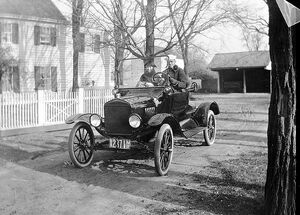
In 1769, Captain Nicolas Cugnot of France built and ran an artillery tractor which was powered by a steam engine. His efforts were far from a complete success, but the vehicle did travel about 4 ½ kilometers per hour between stops to build up steam. Cugnot's vehicle was to be soon improved by another Frenchman, Onesiphore Pecqueur, who invented the differential gear.
In 1801, Richard Trevithick of England built and ran a steam-powered carriage. In the 1820s and '30s many Englishmen constructed, and commercially operated, steam vehicles, which carried passengers and cargo. However, their efforts were severely hampered by conservative countrymen who restricted them from using the public roads. They were forced to turn their attention to operating trains or carriages on private rails; thus giving birth to railroads. It was about this time that Robert Anderson of neighboring Scotland drove the first electric carriage. Also, in 1832, W. H. James recognized the need for flexibility in a self-propelled vehicle and introduced a rudimentary three-speed transmission.
In America, Oliver Evans, a pioneer of the steam engine, had driven a combination wagon and flatboat over land and water as early as 1805 in Philadelphia. Many followed Evans in constructing steam vehicles or electric cars, but gasoline autos were just experiments prior to 1893. Charles Duryea built a three-wheeled, gasoline powered vehicle in 1893, and his company built 13 cars of the same design in 1896. Gasoline automobiles were produced by Elwood Haynes in 1894, by Ransom Olds in 1895, and Charles King and Henry Ford in 1896. Automobile races stirred the public interest and bicycle and buggy manufacturers began to convert to making automobiles.